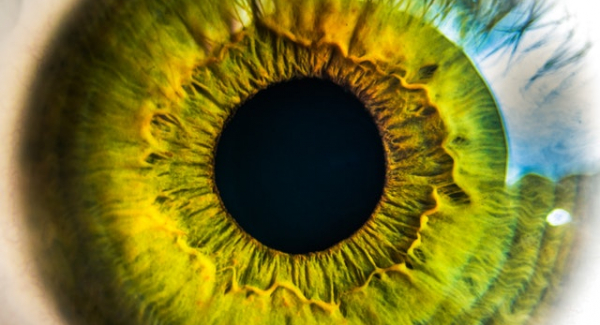We humans devote much time and energy to helping others. We send money to famine victims halfway around the world—or to save whales. We stay up all night to comfort a friend with a broken relationship. We stop on a busy highway to help a stranded motorist change a flat tire. Why do we do these things? What is our motive? The dominant answer in Western thought is well expressed by the wise and witty Duke de la Rouchefoucauld, 2001: “The most disinterested love is, after all, but a kind of bargain, in which the dear love of our own selves always proposes to be the gainer some way or other” (Maxim 82, 1691). Bernard Mandeville puts it even more graphically:
"There is no merit in saving an innocent babe ready to drop into the fire. The action is neither good nor bad, and what benefit soever the infant received, we only obliged our selves, for to have seen it fall, and not strove to hinder it, would have caused a pain, which self-preservation compelled us to prevent. . . . (1714/1732, p. 42)"
According to La Rouchefoucauld, Mandeville, and many others, altruism—motivation with the ultimate goal of increasing another’s welfare—is a myth. It does not really exist. The motivation for everything we do is egoistic. Our ultimate goal is always to increase our own welfare. We help others only to the extent that helping them benefits us.
Egoistic Motives for Helping Others
The case against altruism can be very persuasive because we can benefit in many ways from helping others. Some ways are obvious, as when we get paid or praised for what we do, or escape punishment or censure. Even when we help in the absence of external rewards, we may still benefit. As Mandeville suggested, seeing someone in distress—the babe ready to drop into the fire—may cause us distress, and we help because it relieves our distress. Or we may help to feel good about ourselves for being kind. Or to escape feeling guilt and shame for being callous.
Even heroes and martyrs can benefit from their acts of apparent selflessness. Consider soldiers who save their comrades by diving on a grenade. They may have acted to escape anticipated guilt and shame for letting others die. Or to mgain the admiration and praise of those left behind—or rewards in an afterlife. Or they may simply have misjudged the situation, not realizing their actions would cost them their lives. The suggestion that heroic acts could be motivated by self-benefit may seem cynical, but it must be faced if we are to know whether altruism really exists.
Empathic Concern: A Possible Source of Altruistic Motivation
To be sure, Western thought has had advocates of altruism, including such prominent figures as Thomas Aquinas, David Hume, Adam Smith, and Charles Darwin. What do these advocates think produces altruistic motivation? In both earlier philosophical writing and more recent psychological work, the most frequently mentioned possible source of altruism is an other-oriented emotional reaction to seeing another person in need. This reaction has been called by many names, including sympathy, pity, compassion, soft-heartedness, and tenderness. We call it empathic concern. It is other-oriented in that it involves feeling for, not feeling as, the other. (Some researchers, such as Eisenberg, 2000, use empathy to refer to feeling as the other feels; we do not.) The proposal that empathic concern produces altruistic motivation to relieve the empathy-inducing need has been called theempathy-altruism hypothesis (Batson, 1991).
There are three conspicuous self-benefits of empathy-induced helping, producing three egoistic alternatives to the empathy-altruism hypothesis: aversive-arousal reduction, punishment avoidance, and reward gain. Advocates of the empathy-altruism hypothesis do not deny that relieving the empathy-inducing need is likely to enable the helper to reduce aversive arousal, avoid punishments, and gain rewards. However, they claim that these self-benefits are not the ultimate goal of empathy-induced helping, only unintended consequences. Advocates of the egoistic alternatives disagree. They claim that one or more of these self-benefits is the ultimate goal of the motivation to help produced by empathy.
The (Psycho)Logical Puzzle: Inferring a Person’s Ultimate Goal
If empathy-induced helping benefits both the person in need and the helper, how are we to know which is the ultimate goal? This puzzle has led many scientists to give up on the question of the existence of altruism, concluding that it cannot be answered empirically. Their surrender seems premature. Often, we can make informed judgments about people’s ultimate goals. We can tell whether a student is really interested or only seeking a better grade (What happens to the student’s interest after the grades are turned in?), why a friend chose one job over another, and whether politicians mean what they say or are only after votes. And we can tell why someone does us a favor or is kind.
Four principles are important when attempting to determine the ultimate goal of empathy-induced helping. First, simply asking people why they helped will not work. Especially in a value-laden area like helping, people often do not know—or will not tell—their ultimate goals (Nisbett & Wilson, 1977). Second, goals are not directly observable; we must infer them from behavior. Third, if we observe a behavior (helping) that has two potential ultimate goals (altruism, egoism), the true ultimate goal cannot be determined. It is like having one equation with two unknowns. Fourth, if we change the situation so that this behavior is no longer the best route to one of these goals (the grades are in), and we still observe the behavior (interest), then that goal (a better grade) is not ultimate. We can cross it off the list of possible ultimate goals.
Testing the Empathy-Altruism Hypothesis and the Egoistic Alternatives
Following this logic, we and other social psychologists have conducted a series of experiments to test the empathy-altruism hypothesis against the three egoistic alternatives. Typically, research participants are given an opportunity to help a person in need for whom they have been led to feel low or high empathic concern. A cross-cutting variable is manipulated that changes whether helping is the most effective means (a) to reach the altruistic ultimate goal of removing the other’s need or (b) to reach one or more of the possible egoistic ultimate goals. This procedure allows us to test competing empirical predictions from the empathy-altruism hypothesis and the egoistic alternatives.
The most popular egoistic alternative is aversive-arousal reduction. This alternative claims that to feel empathic concern is distressing, and we help those for whom we feel empathy because doing so eliminates the stimulus causing our concern.Mandeville’s account of why we save the innocent babe is an aversive-arousal reduction explanation.
Is this why people who feel empathic concern help? To find out, we need to vary the situation so that empathic concern can be eliminated in a less costly way than by helping. One way to do this is by varying whether the potential helper can—without helping—easily escape continued exposure to the other’s suffering, the stimulus causing empathic concern. If the ultimate goal of empathy-aroused helping is to remove the empathic concern (egoism), then people who can easily escape should help less than those who cannot. If, on the other hand, the ultimate goal is to reduce the other’s suffering (altruism), they should not help less. Reducing the empathic concern without helping does nothing to reduce the other’s suffering.
Over a half-dozen experiments have been conducted employing this logic. (To imagine yourself in one, see Box 1.) Results consistently reveal that when empathic concern is low, the rate of helping is lower when escape is easy than when escape is difficult, which suggests egoistic motivation to relieve one’s personal distress. However, when empathic concern is high, the rate of helping is high even when escape is easy, which suggests motivation to relieve the other’s suffering, not the empathic concern. These results clearly contradict the aversive-arousal reduction explanation. They support the empathy-altruism hypothesis instead.
Following a similar logic, experiments have tested the other two egoistic accounts proposed to explain empathy-induced helping—avoid social or self-punishments (shame, guilt) and gain social or self-rewards (praise, esteem-enhancement). In all, more than 30 experiments have now been conducted to test the empathy-altruism hypothesis against the egoistic alternatives. With remarkable consistency, results have patterned as predicted by the empathy-altruism hypothesis, not the alternatives (seeBatson, 1991, for a partial review). This evidence has contributed to what Pilivian and Charng (1990) described as "a “paradigm shift” away from the earlier position that behavior that appears to be altruistic must, under closer scrutiny, be revealed as reflecting egoistic motives. Rather, theory and data now being advanced are more compatible with the view that true altruism—acting with the goal of benefiting another—does exist and is a part of human nature."(p. 27)
If empathic concern produces motivation with the ultimate goal of increasing another’s welfare, the dominant Western view must be replaced by a more complex view that allows for altruism as well as egoism. Such a shift in our view of human motivation requires, in turn, a revision of our views of human nature and human potential. It implies that we humans are more social than we have thought. Other people can be more to us than sources of information, stimulation, gratification, and reward as we each seek our own welfare. We have the potential to care about them for their sakes, not simply for our own. (One might wonder how empathy-induced altruistic motivation evolved. Recent evidence suggests that it rests on cognitive generalization of the complex, emotion-based human instinct to provide parental care).
Practical Implications
What are the practical implications of this discovery? They are wide-ranging; some are surprising. One implication is that people may at times wish to suppress or avoid feeling empathic concern. Aware of the extreme effort involved in helping, or the impossibility of helping effectively, caseworkers in the helping professions, nurses caring for terminal patients, and pedestrians confronted by homeless persons may try to avoid empathic concern in order to be spared the resulting altruistic motivation. That is, there may be an egoistic motive to avoid altruistic motivation. Research supports this suggestion ( Shaw, Batson, & Todd, 1994). Research also supports the idea that empathy-induced altruism can, at times, produce immoral rather than moral behavior, as when it produces unfair partiality toward the target of concern. Further, fund raisers or advertisers can exploit the potential of empathic concern to produce altruistic motivation, using it to get us to contribute to causes, noble or otherwise.
More positively, empathic concern has been found to direct attention to the long-term welfare of those in need, producing more sensitive care (Sibicky, Schroeder, & Dovidio, 1995). Empathy-induced altruism has also been found to improve attitudes toward stigmatized groups, including racial minorities, people with AIDS, the homeless, even convicted murderers and drug dealers. And it has been found to increase cooperation in potentially competitive situations. In schools, empathy-based training has been used to increase mutual care among students (e.g., the Roots of Empathy project— Gordon, 2007). In conflict resolution workshops, participants (e.g., Israelis and Palestinians) are encouraged to express their feelings, their hopes and fears, and to imagine the thoughts and feelings of those on the other side. The result is increased perception of one’s opponents as in need and adoption of their perspective, two conditions that, in combination, produce empathic concern. These programs reveal techniques to stimulate empathic concern and, thereby, altruistic motivation. (For research related to each of these implications, see Batson, Ahmad, & Stocks, 2004.)
Clearly, altruism is no myth. It is a reality the power of which we are only beginning to recognize.
References
Batson, C. D. (1991). The altruism question: Toward a social-psychological answer. Hillsdale, NJ: Erlbaum Associates.
Batson, C. D., Ahmad, N., & Stocks, E. L. (2004). Benefits and liabilities of empathy-induced altruism. In A. G. Miller (Ed.), The social psychology of good and evil (pp. 359-385). New York: Guilford Press.
Batson, C. D., Duncan, B., Ackerman, P., Buckley, T., & Birch, K. (1981). http://ft.csa.com/ids70/resolver.php?sessid=d5nomtuqogus9g97eicpp5i1r7&s... ">Is empathic emotion a source of altruistic motivation? Journal of Personality and Social Psychology, 40, 290-302.
Eisenberg, N. (2000). Emotion, regulation, and moral development. Annual review of psychology, 51, 665-697.
Gordon, M. (2007). Roots of empathy: Changing the world child by child. Toronto: Thomas Allen.
La Rouchefoucauld, F., Duke de (1691). Moral maxims and reflections, in four parts. London: Gillyflower, Sare, & Everingham.
Mandeville, B. (1732). The fable of the bees: Or, private vices, public benefits. London: J. Tonson. (Original work published 1714).
Nisbett, R. E., & Wilson, T. D. (1977). Telling more than we can know: Verbal reports on mental processes. Psychological Review, 84, 231-259.
Piliavin, J. A., & Charng, H.-W. (1990). Altruism: A review of recent theory and research. American Sociological Review, 16, 27-65.
Shaw, L. L., Batson, C. D., & Todd, R. M. (1994). Empathy avoidance: Forestalling feeling for another in order to escape the motivational consequences. Journal of Personality and Social Psychology, 67, 879-887.
Sibicky, M. E., Schroeder, D. A., & Dovidio, J. F. (1995). Empathy and helping: Considering the consequences of intervention.Basic and Applied Social Psychology, 16, 435-453.



